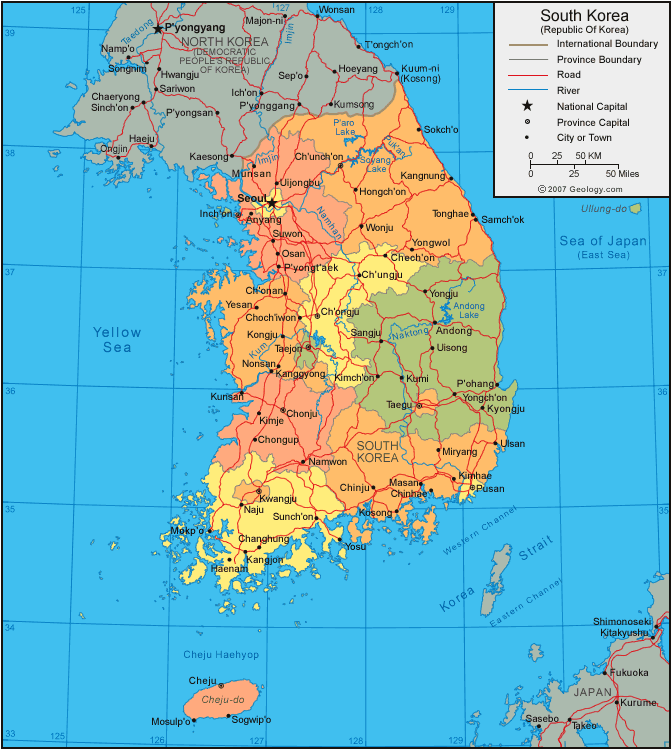 Tae Hea Nahm, a founding managing director of the early-stage firm Storm Ventures, was born in Seoul, Korea, and he still spends at least one week in the country every quarter. He goes to attend startup board meetings. He visits with Samsung and with some of Storm’s LPs, including Korea Telecom. Nahm, who has also cofounded four mobile companies — including MobileIron, which filed to go public yesterday — also seeks out new ideas on these trips. We talked yesterday about what he sees.
Tae Hea Nahm, a founding managing director of the early-stage firm Storm Ventures, was born in Seoul, Korea, and he still spends at least one week in the country every quarter. He goes to attend startup board meetings. He visits with Samsung and with some of Storm’s LPs, including Korea Telecom. Nahm, who has also cofounded four mobile companies — including MobileIron, which filed to go public yesterday — also seeks out new ideas on these trips. We talked yesterday about what he sees.
You’re in Korea more often than most U.S VCs, I’d imagine.
Well, I’m Korean, so visiting is relatively easy for me. It also helps me with my mobile investments in the U.S. People who invest in digital advertising look at startups in Silicon ValIey and New York; I feel that Silicon Valley and Korea are naturally synergistic in the same way when your primary [focus] is in on mobile.
Where do you look for trends?
I like to ride the subway in Seoul to get an idea of what people do. In New York, for example, most people are listening to music on their mobile devices or maybe reading a Kindle or something because connectivity on the subway is very poor. In Seoul, about a quarter of people on the subway are streaming a drama or sports show on their iPads or Galaxy Notes because they have the Internet infrastructure to do it.
Mobile video is really going to take off here, too. It’s why a huge investment is being made by Samsung and Apple to create higher resolution displays. It’s why, on the other side, content video providers like Amazon and YouTube and Netflix expect more people to watch their content over mobile devices. It’s also why one company we started in Korea that optimizes your mobile video session across multiple wireless networks is doing very well.
Other than gaming, where else has Korea gotten a jump on the U.S.?
An example I saw and didn’t take advantage of are credit card readers. Many years ago, a taxi driver who picked me up basically scanned and processed my credit card with a cellular reader that was like a bigger form of Square. Kakao, the messaging platform, also took off must faster in Korea than messaging took off here in the U.S. In that case, it was mostly driven by cost. In the U.S., the savings of using free messaging here is less compelling than in Europe or Korea. But it also just fits in with human nature.
How hard is it to separate out what’s an early indicator of a big trend, versus something that might be popular specifically because of the culture?
It can be difficult. I email with my wife a lot, but in Korea, a husband and wife would rarely email each other; dating back at least 10 years, they’d text each other because email is considered slow and formal whereas texting is faster and spontaneous. There, I felt like texting was more cultural, and my initial assumption was incorrect.
Are so-called ephemeral apps interesting to the Korean market?
Yes. There’s a company in Korea, Between, that allows you basically to just create a private social network between two individuals, and either individual can terminate the whole conversation and all the content stored. It’s like a private communication locker, versus a Snapchat, where it’s just a private message.
Would you try to bring it to the U.S or incubate something similar? You’ve incubated several companies here in the past.
I’ve started companies like Airespace [acquired by Cisco for $450 million in 2005] where I was the founding CEO and hired the first 24 employees, and MobileIron, where I hired the first three founders. At the same time, we don’t want the reputation of ripping off entrepreneurs’ ideas, so we don’t just form clones.
Also, the problem in [recreating an idea] is whether the founders you hire will really be passionate about the idea. Passion for their idea is what makes entrepreneurs so special. If I have the belief and desire and the executive team doesn’t have it, it doesn’t work.
There must also be major differences in the way things are marketed. What are some of the biggest ways the markets in Korea and the U.S. continue to differ?
Korea is a very small homogenous country, so if five people believe something, everyone will believe it, whereas because the U.S. is so big and diverse that word of mouth is much less powerful. Westeners also like things that are more realistic; Asians like things that are more cartoonish.
And Koreans like tutorials; they like to go through manuals to teach themselves how to become power users. Americans hate them. They like to push buttons and get results. I don’t know if Apple brainwashed them or understood them, but American users don’t want to read anything.
Sign up for our morning missive, StrictlyVC, featuring all the venture-related news you need to start you day.
